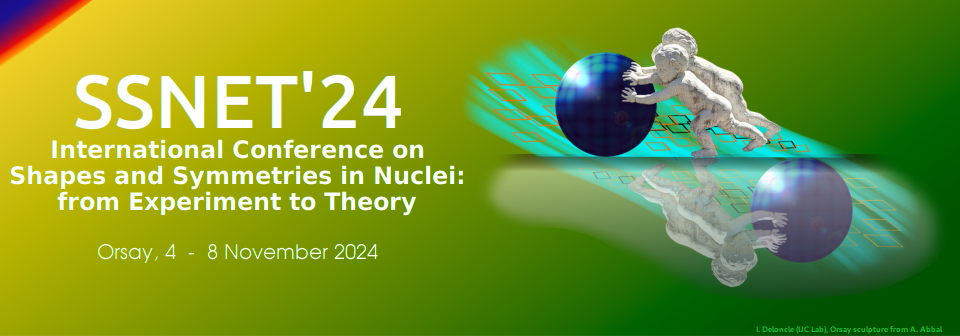Orateur
Description
The energy density functional (EDF) approach in nuclear physics often utilizes mean-field wave func- tions that intentionally break certain symmetries of the Hamiltonian to incorporate static correlations. To achieve a precise description of nuclear properties and recover quantum numbers, the restoration of these broken symmetries is essential. While symmetry-restored calculations are common for study- ing ground-state properties and low-lying excitations, their application to nuclear responses remains largely confined to theoretical studies and schematic models. This work investigates the effects of angular momentum projection (AMP) on the monopole and quadrupole responses of deformed nuclei.
Using deformed Skyrme-random-phase-approximation (RPA) calculations, an exact AMP in the multipole strength function calculations is implemented, establishing a projection after variation (PAV- RPA) scheme. This method is applied for the first time in a realistic study to examine AMP’s impact on the coupling of monopole and quadrupole modes in the intrinsically deformed nucleus 24Mg.
Results reveal that the monopole PAV-RPA response function exhibits a significant amount of low-energy strength, in addition to the giant resonance peaks. The characteristics and nature of this strength are analyzed and discussed. In the quadrupole channel, AMP leads to the suppression of all strength except that corresponding to the isoscalar giant quadrupole resonance.
The anomalous low-lying monopole strength is interpreted as contamination of the excited states due to coupling with the non-infinitesimal rotational motion in deformed RPA phonons. This spurious strength was also identified in projected generator coordinate method (PGCM) calculations using a similar PAV approach, but was absent in full variation after projection (VAP) calculations. Although the spurious strength was effectively subtracted in this study, these findings highlight the need for future implementation of full VAP-RPA to achieve more accurate results.

